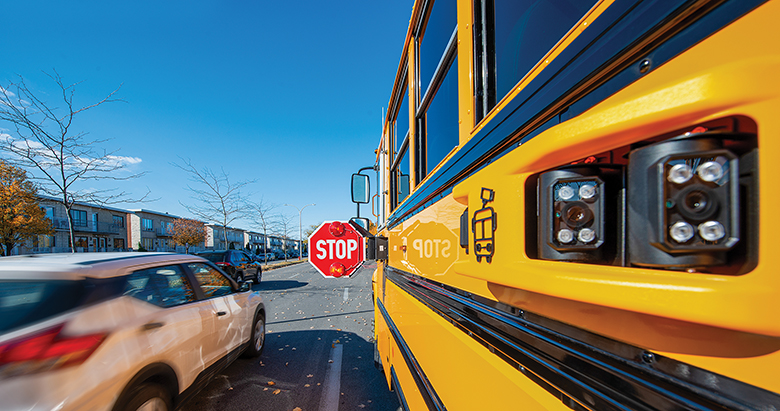
BusPatrol is delivering on its promise of making roads safer for children across New York State. In late 2020, BusPatrol partnered with Suffolk County to create the largest stop-arm enforcement program of its kind – with 71 school districts participating and more than 4,000 buses equipped with technology.
 Drivers illegally pass stopped school buses more than 17 million times a year in the US. BusPatrol aims to reduce this number to zero with its no-cost school bus safety programs, which bring advanced safety technology to districts to curb this dangerous behavior.
Drivers illegally pass stopped school buses more than 17 million times a year in the US. BusPatrol aims to reduce this number to zero with its no-cost school bus safety programs, which bring advanced safety technology to districts to curb this dangerous behavior.
“Safety is our mission – that’s where it begins and ends,” said Jean Souliere, CEO of BusPatrol. “Everyone in pupil transportation believes that student safety should always come first, but unfortunately, the industry hasn’t been given the tools to do that.”
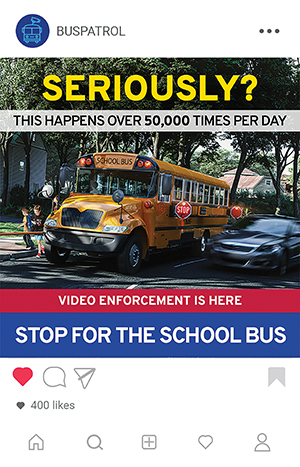
BusPatrol’s unique safety program combines education and enforcement to improve road safety for students by changing motorist behavior around school buses. It brings together entire communities, including government officials, school districts, and law enforcement officers, who work together with BusPatrol to implement the initiative. Before a single ticket is issued, BusPatrol runs education and awareness campaigns to re-educate motorists on school bus safety laws and teach children how to get on and off the bus as safely as possible.
The technology platform consists of cloud-connected stop-arm and safety cameras – powered by a proprietary Automated Violation Analysis (AVA) system – and 4G LTE connectivity. If a driver ignores a stop-arm from a vehicle equipped with BusPatrol, the system automatically documents the violation and captures the offender’s license plate. The program is paid for by citations issued for violations – with the school district or taxpayer never owing a cent.
“We don’t just put stop-arm cameras on a subset of a fleet in order to maximize ticketing,” Souliere said. “That’s been the traditional approach to stop-arm enforcement, but it doesn’t protect 100 percent of the kids, 100 percent of the time. We issue full fleet deployments everywhere where we go, irrespective of where those school districts are in the city, suburbs, or country.”
Making Suffolk County Safer
School bus safety was a growing concern for Suffolk County school districts. Richard Gallagher, director of transportation at Bay Shore Schools, explained: “We were taking part in surveys and manual counts at least twice a month, and all those counts showed between 90 – 95 passes a day on school buses. We wanted to reduce the number of passes and make the transportation for these students safer.”
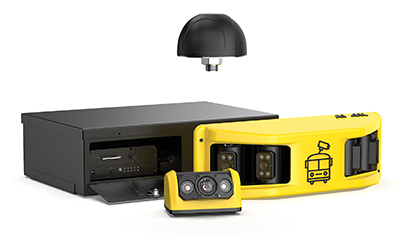 Bay Shore Schools explored numerous approaches to reduce this unsafe behavior, writing articles to local and national publications and inviting television media to cover the problem.
Bay Shore Schools explored numerous approaches to reduce this unsafe behavior, writing articles to local and national publications and inviting television media to cover the problem.
“We kept putting out information that [passing stopped school buses is] wrong and against the law and demanding change,” Gallagher said. “Itwould help for a week or two but never had any huge effect. There was not enough pressure to change their behavior.”
Thankfully, in 2019 Governor Cuomo signed legislation authorizing school districts to install stop-arm cameras on school buses. This, hopefully, would empower counties across the state to create enforcement programs to make kids safer.
“We couldn’t have a police officer following every school bus, we needed something more.”
District officials and the New York Association for Pupil Transportation (NYAPT) began lobbying the local legislature to allow the use of automated enforcement to stop dangerous driving around school buses. The legislation was passed unanimously. From there, they met with county officials to determine the program’s needs and implementation.
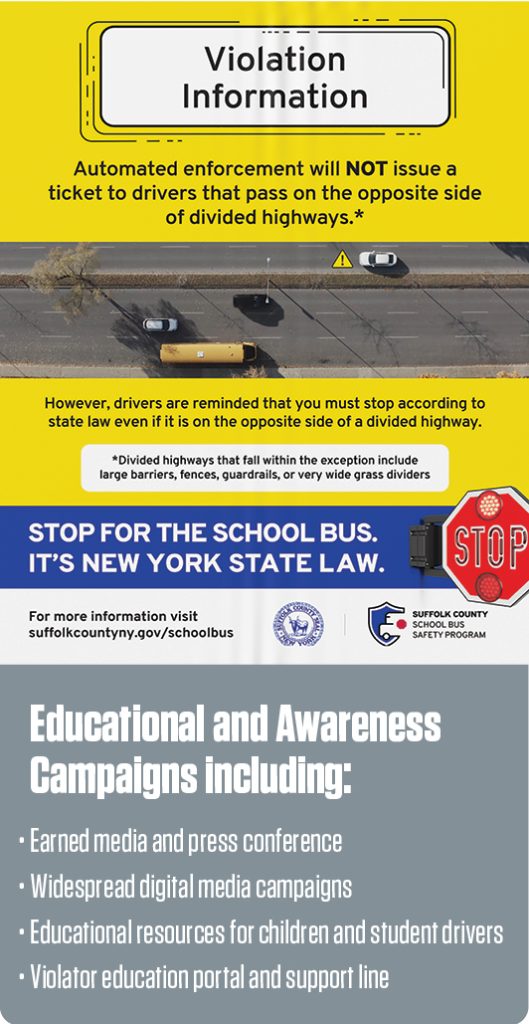 “We had a lot of frustration on the part of drivers for the safety of their students,” said Joe Lesnick, president of the Suffolk Chapter of NYAPT. “But our laws did not have a lot of teeth for enforcement. We couldn’t have a police officer following every school bus, and so we needed something more.”
“We had a lot of frustration on the part of drivers for the safety of their students,” said Joe Lesnick, president of the Suffolk Chapter of NYAPT. “But our laws did not have a lot of teeth for enforcement. We couldn’t have a police officer following every school bus, and so we needed something more.”
Utilizing an RFP process, Suffolk County partnered with BusPatrol to launch its zero-cost, full-fleet school bus safety program.
BusPatrol and the County began by forming a School Bus Safety Committee comprised of pupil transportation professionals, PTA representatives, law enforcement, government agencies, and other community stakeholders. The committee and its members were integrally involved with rolling out the program and distributing educational content – promotional materials, commercials, radio advertisements, youth-based advertising, web content, social media campaigns, and more. The educational campaign worked to proactively change driver behavior around school buses and promote a safer driving culture on school roads before the first ticket was even issued.
The Suffolk County School Bus Safety Committee used data from the program to proactively boost enforcement in high-risk zones, installing more than 100 road signs reminding drivers to stop for school buses at violation hotspots. The data also enabled law enforcement to target physical police presence in these high violation areas, as was the case at this year’s Operation Safe Stop. Each year for Operation Safe Stop, New York State police dedicate an entire day to enforcing school bus safety laws. This year was the first year that automated enforcement was active in the state, capturing violations every day of the year.

Education continues to be integral to the Suffolk County School Bus Safety Program. In September 2021, a follow-up back-to-school campaign reminded motorists of important school bus safety laws. As well as educating drivers, the program is also helping to educate children and young learner drivers. School districts have access to worksheets, posters, and animations to remind children of the safe crossing signal. Local DMV offices have access to information packs and educational videos about school bus safety laws for learner drivers.

“Suffolk County really understood that, in order for it to be a safety program, the ticket couldn’t be the only form of education,” Souliere said. “We had to leverage the community, data, and the creative talent of everyone involved to make sure that we were building something special.”
“Many driver education programs might spend two minutes or less on the topic of passing school buses,” Gallagher said. “Our public service program, which included multi-language announcements about the program and its logistics, did more to educate the general public than any other program in recent memory.”
Gallagher – who was part of writing the state’s bill – said that the combination of legislation, public information, and enforceable tickets has created a real dent in the number of annual violations in his district.

“When they started forming this post-advisory committee in Suffolk County, I wanted to be a part of it and see our work come to a conclusion,” he said. “The only acceptable conclusion, where the number of buses being passed was decreasing. So far, we’ve been able to stop repeat offenders who might have previously passed buses every day. There is still much more work to be done, but the message is getting out.”
BusPatrol – in New York State and beyond
BusPatrol launched its second BusPatrol Academy in Long Island, New York, last year (the first BusPatrol Academy is in Chantilly, Virginia). The Academy offers intensive and hands-on training and certification for technicians.
 “We created the BusPatrol Academy so that we could have our own network of trained field service technicians,” Souliere said. “Before you can even start working on one of our clients’ buses, you must be certified by our program. It allows us to scale with quality, no matter where our technology is deployed.”
“We created the BusPatrol Academy so that we could have our own network of trained field service technicians,” Souliere said. “Before you can even start working on one of our clients’ buses, you must be certified by our program. It allows us to scale with quality, no matter where our technology is deployed.”
BusPatrol is currently launching the Suffolk County School Bus Safety Center in Hauppauge, New York, thereby creating 50 new jobs in the county for the center’s employees. This job creation, in addition to the numerous field service technician positions needed to service the county’s BusPatrol systems, is part of the company’s plan to support the local community.
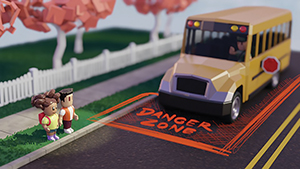 “Our aim is to be on every single school bus in New York State,” Souliere said. “But to do that, we have to show we are serious about being community stakeholders too.”
“Our aim is to be on every single school bus in New York State,” Souliere said. “But to do that, we have to show we are serious about being community stakeholders too.”
BusPatrol has begun working with the Town of Hempstead, Dutchess County, Rensselaer County, and the City of Niagara Falls, as well as launching pilot programs in Westchester County and Buffalo.
For other districts looking to add BusPatrol or other stop-arm enforcement measures, Gallagher has a simple piece of advice: Do it as quickly and as thoroughly as possible.
 “The faster we get these devices implemented across the entire state, the safer our children will be,” he said.
“The faster we get these devices implemented across the entire state, the safer our children will be,” he said.
“Reach out to us, and we’ll show you that these safety programs are about a lot more than a camera,” Souliere added. “These programs are really safety-as-a-service – they can be accomplished as pilot programs, education, installation, and implementation. Whatever the speed your community wants to proceed, then you can rest assured that BusPatrol will be there to help you on the way.”
 Lesnick said that NYAPT continues to push for adoption across the state, adding that the technology provides invaluable qualitative insight on bus safety.
Lesnick said that NYAPT continues to push for adoption across the state, adding that the technology provides invaluable qualitative insight on bus safety.
“Let’s move forward,” he said. “Let’s make the state a safer place. Not just in Suffolk County – we need to do this for the 2 million students that we transport every day in New York State.”


